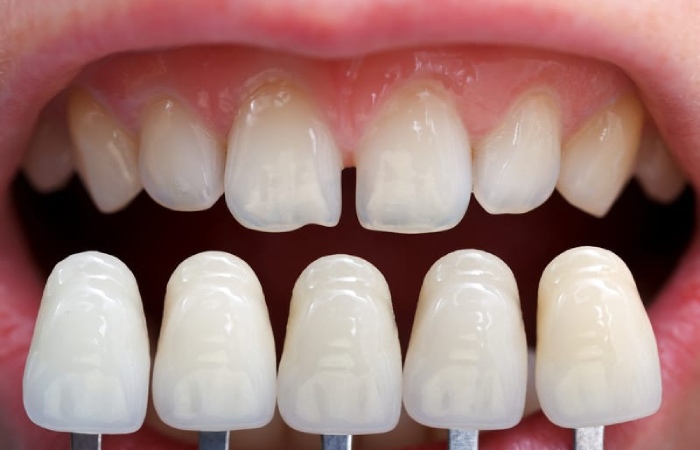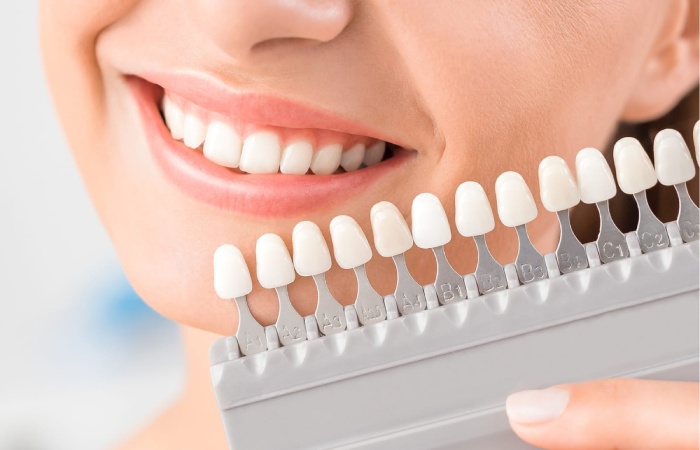A dental top is used to replace significant portions of the missing tooth. This could be due to a cavity, an illness, an accident, or perhaps the tooth has been that way since birth. A dental crown will shelter the entire underlying tooth, touching the opposing and adjacent teeth. A dental crown can be complete for a front or back tooth.
The Dental Crown procedure

A crown includes the removal of tooth structure to transform the tooth into a stump on which a crown or cap is fabricated. If your tooth is severely damaged, cutting it this way can be beneficial because the crown can restore the tooth’s strength and eliminate cavities.
The procedure usually involves:
- Initial consultation and discussion regarding the suitability of a dental crown.
- Preparation meeting
- Local anaesthesia will be administered.
- The underlying tooth is cut to accommodate the dental crown.
- An impression of the cut tooth is taken and sent to the dental laboratory.
- A temporary crown is placed.
- A dental lab will then brand the crown, which takes approximately two weeks.
- Appropriate quote.
- You will receive local anaesthesia.
- The temporary crown is removed.
- The permanent crown is tried on.
- If you are happy with the enduring crown, it will be permanently fused to your tooth.
- Follow-up appointment to make sure everything is okay.
However, if the tooth is healthy, trimming a stump could be considered a destructive way to restore that tooth and a dental veneer may be preferable.
What are dental crowns made from?
A crown is a new permanent covering for the visible part of your tooth. They are normally made with three different materials.
- All porcelain or tooth-coloured crowns.
- metal crowns
- A combination of metal and tooth-coloured material.
All porcelain or tooth-coloured crowns.

A menu is made of zirconium (the same material used in hip prostheses and Formula 1 engines… in other words, very durable!) or ceramic: e.max crowns are very popular. Today.
These crowns tend to be much more aesthetically pleasing than any other crowns because they let light through and are not opaque. However, until recently, they were not as strong as different types of crowns and were, therefore, more prone to fracture.
Metal crowns
They are still widely considered the best dental crowns, especially when they are made of gold. Gold crowns have been manufactured for many years, and their success is now well-documented. They are very strong, and the gold is exceptionally gentle on surrounding teeth. However, today, many people do not like the look of gold crowns.
A combination of metal and tooth-coloured material (dental crown)
Often called PFM (porcelain fused to metal), this type of crown dates back to the 1960s, when it was first exposed that dental ceramic could bond to metal. These crowns are very robust and aesthetic and have a long history of success in dentistry.
They are used less and less because they are not as aesthetic as a crown without metal. After all, light cannot pass through them, which tends to make them shiny and dull.
How are crowns made?

A variety of methods are used to make crowns, from traditional “lost wax” techniques to state-of-the-art CADCAM crowns.
CADCAM or Computer Aided Project Computer Aided Manufacturing is a growing industry in the field of dentistry, and many systems such as:
- CEREC from Sirona
- Straumann iTero
- Lava from 3M Spain
- Nobel Biocare
These schemes allow the dental technician to work with tolerances never seen before and use materials that
would otherwise be difficult to use, such as zirconia crowns.
Dental Crown cost UK?
A dental crown from a secluded dentist can cost £300 or more. It all depends on the skills of each dentist and the decision to use an outstanding dental laboratory.
These days, many dentists choose to ship their crowns to China and can then purchase them for as little as £13. However, communication may not be as good as working with a UK laboratory. What about the quality?
Crowns from an excellent UK dental laboratory will cost between £120 and £300 per tooth. Once the dentist has billed for their time, this usually equates to around £300 or more for the patient.

